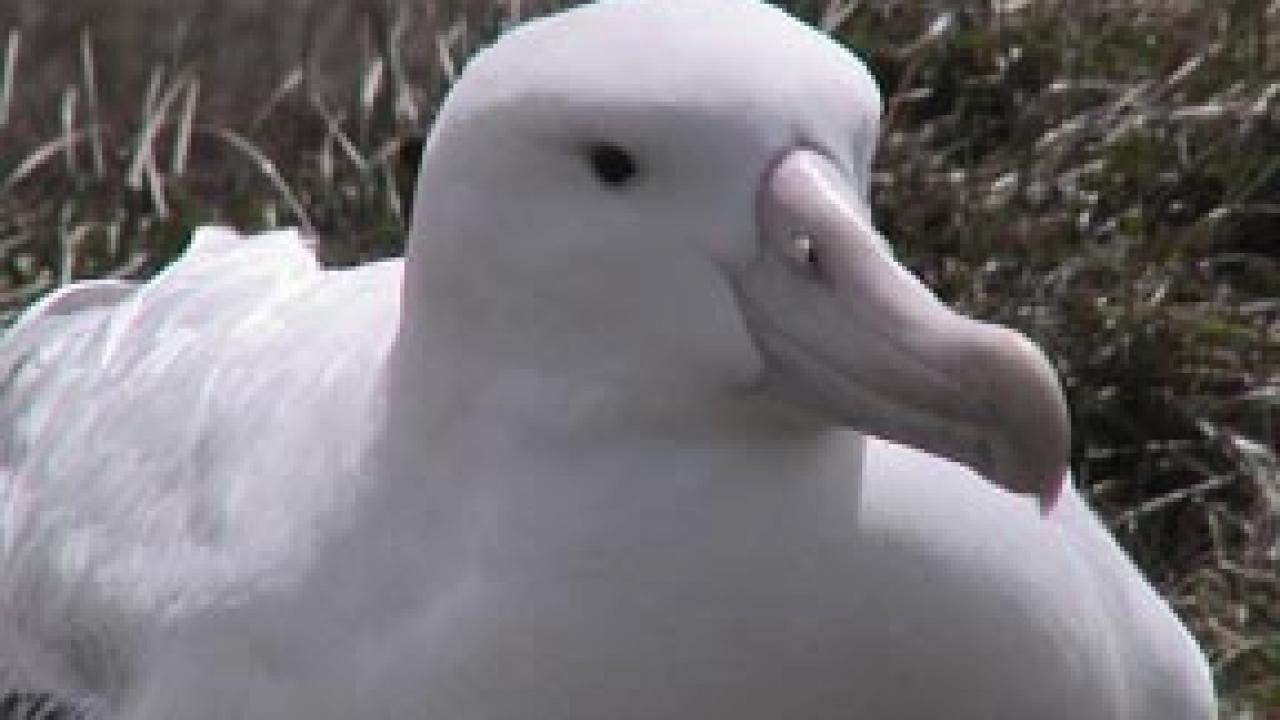The first study of how individual wandering albatrosses find food shows that the birds rely heavily on their sense of smell. The birds can pick up a scent from several miles away, U.S. and French researchers have found.
"This is the first time anyone has looked at the odor-tracking behavior of individual birds in the wild using remote techniques," said Gabrielle Nevitt, professor of neurobiology, physiology and behavior at UC Davis and an author on the study. Co-authors included UC Davis graduate student Marcel Losekoot of the Bodega Marine Laboratory.
Wandering albatrosses fly for thousands of miles across the ocean, usually gliding a few feet above sea level. Floating carrion, especially squid, make up a large part of their diet.
Albatrosses nesting on Possession Island in the southwestern Indian Ocean were fitted with global positioning satellite receivers to record the birds' positions every 10 seconds, and stomach temperature gauges to note every meal. When the birds returned to land after foraging trips, the researchers removed the equipment and downloaded the data.
They found that the birds usually flew across the wind, which allows them to cross plumes of scent drifting downwind and is also the best strategy for energy-efficient soaring.
Sometimes birds would fly straight to food, but almost half the time an albatross would either turn upwind or zigzag into the wind toward a meal. Both patterns suggest that the birds were following a plume of scent, rather than visual cues. Birds could turn upwind toward a food source several miles away — well over the visual horizon.
Hunting by scent allows the albatross to cover a strip of ocean several miles wide as it flies crosswind, Nevitt said.
Wandering albatrosses and their relatives do not appear to have particularly good eyesight, compared with other predatory birds, and the albatrosses' eyes may be adapted to scan movement on the horizon. That might help them detect other groups of birds gathered around food.
The Proceedings of the National Academy of Sciences published the study online.
Media Resources
Dave Jones, Dateline, 530-752-6556, dljones@ucdavis.edu
